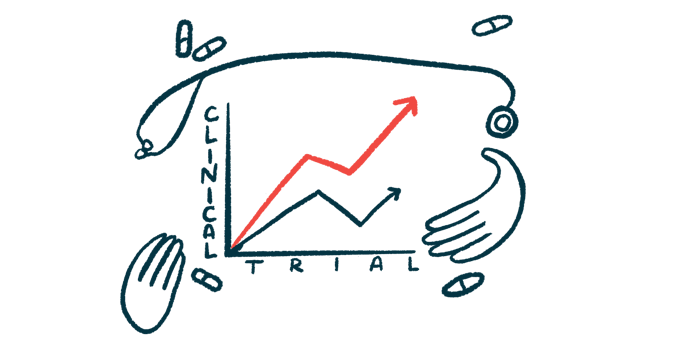Experimental therapy works better if taken earlier in Alzheimer’s
Blarcamesine appears to slow cognitive, functional decline in long-term study
Written by |

An experimental oral therapy called blarcamesine appears to slow the progression of Alzheimer’s disease, reducing the rate of cognitive decline and preserving daily function over the long term, according to new trial data from its developer, Anavex Life Sciences.
The data “indicate disease-modifying effect of oral blarcamesine and highlight the importance of early and continued long-term treatment of chronic Alzheimer’s disease,” Marwan Sabbagh, MD, chairman of the Anavex Scientific Advisory Board, said in a company press release.
“These enhanced clinically meaningful improvements are accompanied by blarcamesine’s favorable safety profile,” added Sabbagh, who presented the findings at the 2025 Alzheimer’s Association International Conference. “This could help reduce crucial barriers within the currently complex healthcare ecosystem for Alzheimer’s disease and potentially provide broader access to a diverse population with early Alzheimer’s disease.”
Oral pill taken once daily
Alzheimer’s is a neurodegenerative disorder characterized by abnormal clumps of proteins that form in brain cells. Blarcamesine, also known as Anavex 2-73, is a daily oral therapy designed to enhance autophagy, a form of molecular recycling that cells can use to clear away unneeded or toxic proteins.
“Convenient once-daily oral dosing of blarcamesine may allow us to offer a scalable and patient friendly oral pill administration option to patients with early Alzheimer’s,” said Juan Carlos Lopez-Talavera, MD, PhD, head of research and development at Anavex.
A Phase 2b/3 clinical trial (NCT03790709) tested blarcamesine against a placebo in more than 500 people with mild dementia or mild cognitive impairment due to Alzheimer’s. Results showed that, after a year, patients given blarcamesine had significantly less decline in cognition, as measured with a standardized test called the Alzheimer’s Disease Assessment Scale-Cognition (ADAS-Cog13).
After that trial ended, participants had the option to enter into ATTENTION-AD (NCT04314934), an open-label extension study in which all patients were treated with daily blarcamesine and monitored for long-term outcomes. The new analyses cover up to 192 weeks (nearly four years) of blarcamesine treatment across the original trial and the extension study.
Data showed that, by 192 weeks, average ADAS-Cog13 scores were significantly better in patients who’d originally started on blarcamesine compared with patients who’d been given the placebo for a year. The average difference in ADAS-Cog13 score was 3.83 points.
A similar difference was found for scores on the Alzheimer’s Disease Cooperative Study-Activities of Daily Living Scale (ADCS-ADL), a measure of overall function. Scores were on average 4.3 points better in patients who’d started blarcamesine earlier.
According to Anavex, the clinical utility of disease-modifying therapeutics like blarcamesine may be enhanced through a precision medicine approach, which targets individuals with genetic profiles relevant to the drug’s mechanism of action.
Genetic variations thought to make blarcamesine more effective
In this context, Anavex identified a genetic subgroup known as ABCLEAR2, comprising individuals who have genetic variations that are thought to make blarcamesine more effective. Up to about 71% of patients share this prevalent genetic profile.
In this subgroup, patients who took blarcamesine earlier showed better outcomes, with average ADAS-Cog13 cognitive scores improving by 5.43 points and ADCS-ADL functional scores by 9.5 points, compared to those who started later. Similar responses were observed in the original placebo-controlled trial.
“This Precision Medicine data provide potentially continued persuasive evidence that earlier initiation of treatment with blarcamesine may have a significant positive impact on disease progression and may provide sustained clinically meaningful benefits to patients with early Alzheimer’s disease over the long-term,” Sabbagh said.
Long-term treatment with blarcamesine was well tolerated and appeared safe. Most side effects were mild to moderate, with no cases of brain swelling or hemorrhage, and no deaths related to the drug. The most common drug-related side effect, dizziness, did not typically last long.
Christopher Missling, PhD, Avanex’s president and CEO, said “the comprehensive data from the blarcamesine Alzheimer’s disease program represents a solid foundation for continuous engagement with the Alzheimer’s disease community.”





